SWACHH BHARAT MISSION 2.0
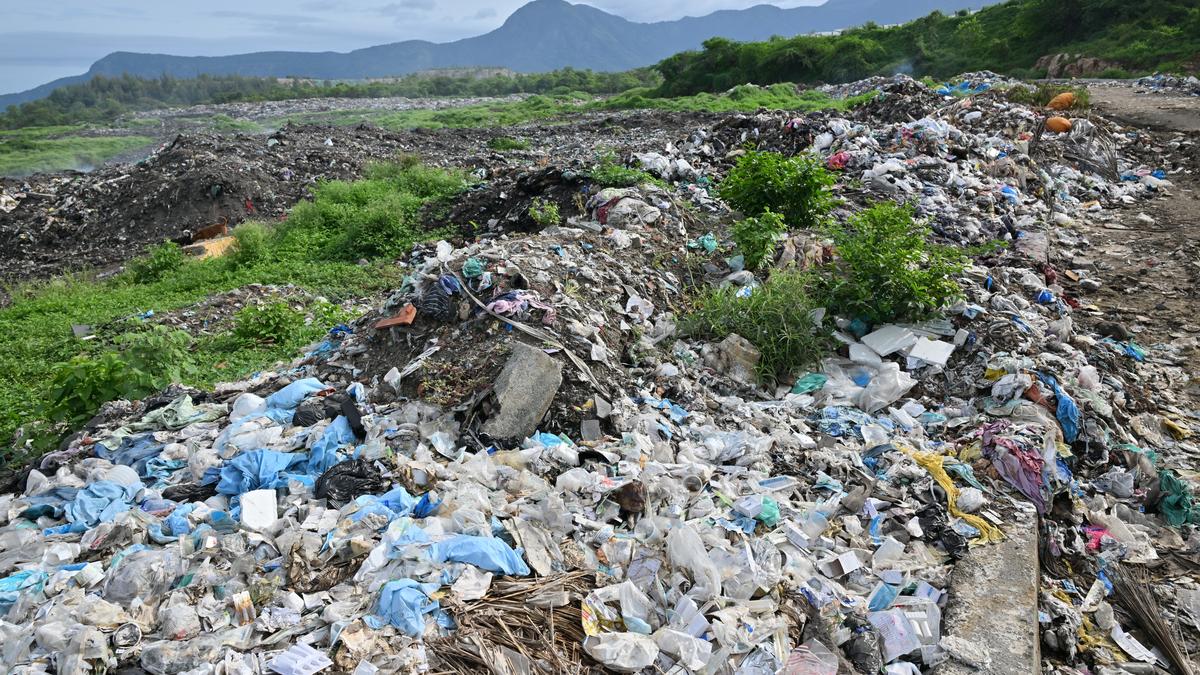
- 24 Sep 2024
Mission Overview:
- Launched on October 1, 2021, as the second phase of the Swachh Bharat Mission.
- Aims for "Garbage-Free Status" in all urban areas by 2026.
- Focuses on 100% source segregation, door-to-door waste collection, and scientific waste management.
Legacy Waste Issues:
- Legacy waste consists of improperly collected and stored solid waste, often found in landfills and abandoned sites.
- Approximately 15,000 acres of prime land are buried under nearly 16 crore tonnes of legacy waste in India.
- The mission seeks to convert legacy dumpsites into green zones and establish scientific landfills to manage untreated waste.
Current Progress:
- Of 2,424 identified dumpsites (each with over 1,000 tonnes of waste), only 470 have been fully remediated (16% reclaimed).
- 1,224 sites are under ongoing remediation, while 730 remain untouched.
- Out of 28,460 acres of affected land, 4,552 acres have been reclaimed, with 23,908 acres still to be addressed.
State Performance:
- Tamil Nadu: 837 acres reclaimed (42% of its total dumpsite area).
- Gujarat: Leads in percentage, reclaiming 75% of its landfill area (698 out of 938 acres).
Financial Aspects:
- Central assistance of ?3,226 crore has been approved for remediation efforts.
- States and Union Territories must provide a matching share to access these funds.
Challenges:
- Legacy waste management involves complexities such as radiological characterization, leachate management, and fire control.
- Current municipal solid waste generation in India is around 150,000 tonnes per day.
Historical Context:
- The original Swachh Bharat Mission (SBM-U 1.0) launched on October 2, 2014, focused on making urban areas Open Defecation Free (ODF).
GREENLAND LANDSLIDE AND GLOBAL SEISMIC WAVES
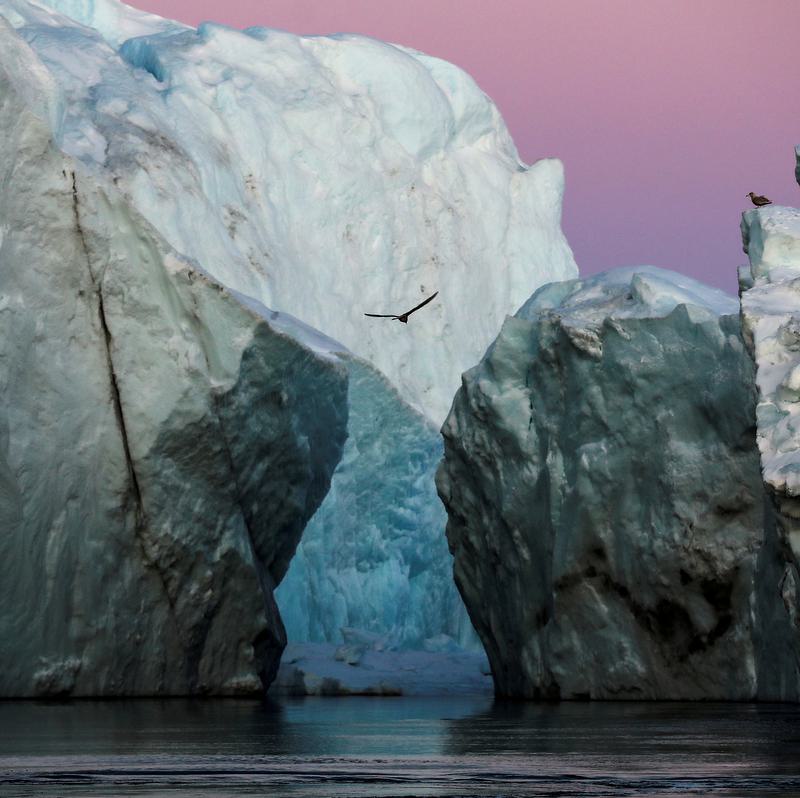
- 24 Sep 2024
In News:
Massive Greenland landslide sent seismic waves around earth for 9 days. One year ago, roughly 25 million cubic metres of ice and rock splashed into the Dickson Fjord in Greenland and displaced the water enough to give rise to a 200-metre high mega-tsunami; in this way, a melting glacier led to a planet-wide tremor, and researchers warn that it may not be the last
Seismic Observations
- Detection: Unusual seismic signals recorded by stations worldwide, characterized by a single frequency, unlike typical earthquake vibrations.
- Classification: Initially termed a "USO" (unidentified seismic object) due to its atypical properties.
- Duration: Waves persisted for nine days, unlike typical aftershock patterns.
Investigation Efforts
- Collaboration: Involved over 68 researchers from 40 universities across 15 countries.
- Data Sources: Combined seismic data, satellite imagery, water level monitors, and a classified bathymetric map from the Danish Navy.
- Conclusion: The seismic waves resulted from a massive landslide caused by the collapse of Hvide Støvhorn peak, which triggered a series of events leading to the tsunami.
Mega-Tsunami and Seiche
- Tsunami Details:
- Created by the avalanche crashing into the fjord, displacing water significantly.
- Resulted in waves that reflected off fjord walls, reaching heights of nearly 110 meters due to the fjord's unique shape.
- Seiche Phenomenon:
- Oscillations in the fjord persisted for over nine days, reflecting the energy from the landslide.
- Maximum amplitude of the seiche recorded at 7.4 meters, with a frequency of 11.45 MHz.
Climate Context
- Global Warming Impact: Thinning glaciers contributed to instability in the region, making such landslides more likely.
- Future Predictions: Researchers warn of increased frequency and scale of similar events as climate change continues to affect Arctic and subarctic regions.
Key Takeaways
- The Greenland landslide serves as a reminder of the unpredictable consequences of climate change, including massive geological events.
- The incident highlights the interconnectedness of natural systems and the potential for localized events to have global repercussions.
ROBOTIC MULES AND HIGH-ALTITUDE INNOVATIONS IN THE ARMY
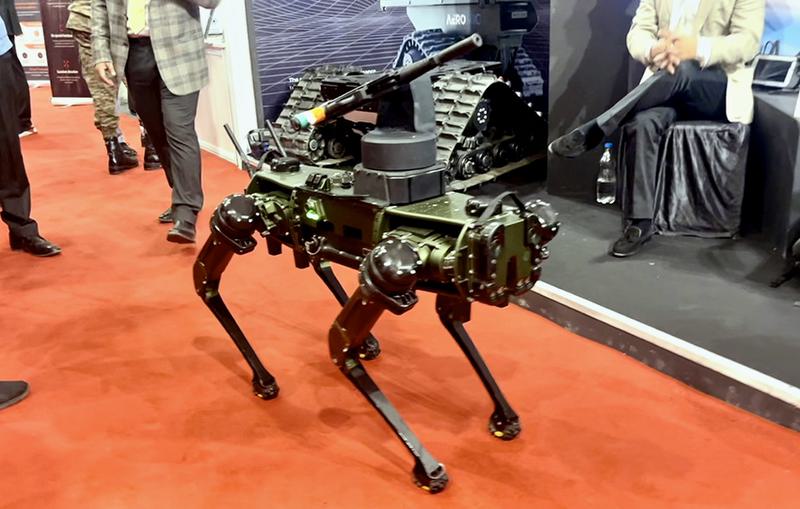
- 24 Sep 2024
In News:
The Army has inducted 100 robotic mules, known as Multi-Utility Legged Equipment (MULE), under the fourth tranche of emergency procurements (EP).
- Purpose: These robotic mules are designed for surveillance and transporting light loads across challenging terrains, especially in high-altitude areas.
- Specifications:
- Endurance: Capable of operating for up to three years.
- Temperature Range: Functions effectively in extreme temperatures from -40°C to +55°C.
- Payload Capacity: Can carry up to 15 kg.
- Mobility: Can climb stairs, steep hills, and traverse obstacles; waterproof and able to cross rivers.
- Sensing Abilities: Equipped with electro-optics and infrared capabilities for object recognition.
- Control Mechanisms: Operable via an easy-to-use remote control, Wi-Fi, or Long-Term Evolution (LTE) connections.
- Mission Programming: Can be programmed for specific missions using waypoints or pre-recorded tasks.
- Combat Integration: Capable of integration with small arms for military applications.
- Logistics Drones: Logistics drones are currently undergoing trials to enhance support and movement in forward areas, particularly in high-altitude conditions.
- High-Altitude Habitat Evaluation: A new tent designed for extreme cold environments (operating at temperatures down to -40°C) is under evaluation. This tent, called Peak Pods, is intended for use in sub-zero conditions.
- Evaluation Locations: The tent has been tested in three high-altitude sites:
- Leh (11,500 feet)
- Daulat Beg Oldie (16,700 feet)
- Durbuk (12,500 feet)
- Significance: These advancements reflect the Army's focus on technological innovations to enhance operational capabilities in high-altitude areas, especially following the 2020 stand-off with China in Eastern Ladakh.
- Funding and Timelines: The EP process allows contracts up to ?300 crore, with a requirement for delivery within one year.
GINGEE FORT PROPOSED FOR UNESCO WORLD HERITAGE SITE
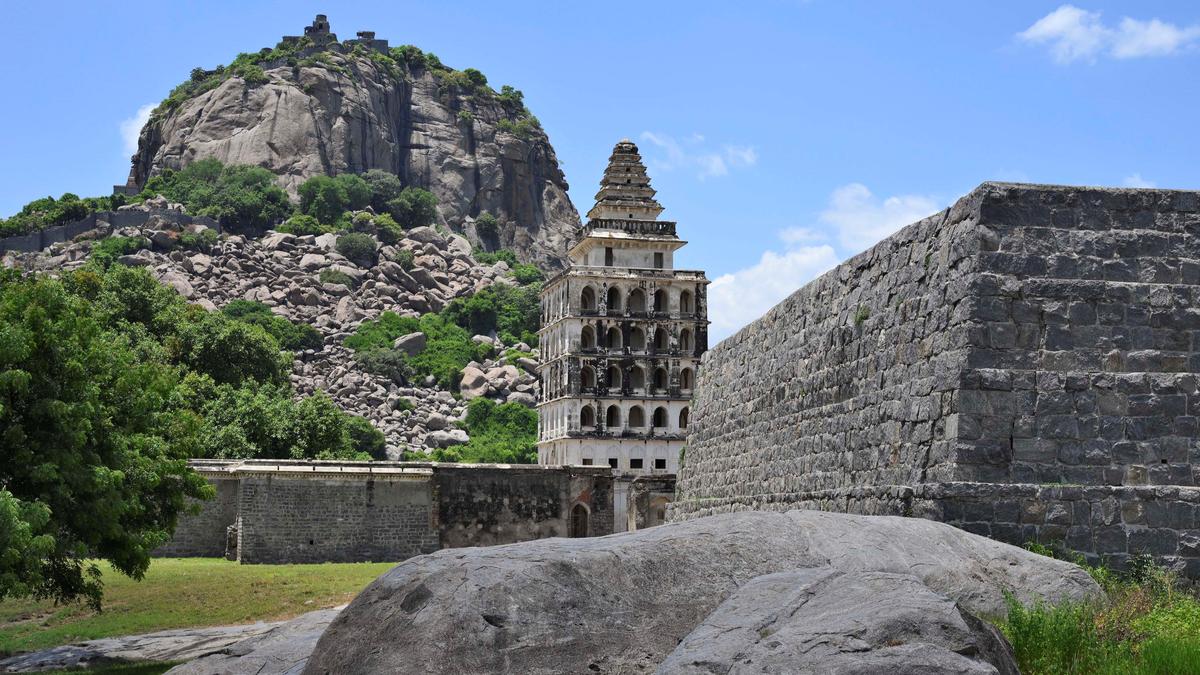
- 24 Sep 2024
In News:
Recently nominated for UNESCO’s World Heritage Site status, Gingee Fort is part of the Maratha Military Landscapes of India, which encompasses 12 historical sites, primarily located in Maharashtra, with Gingee being the sole representative from Tamil Nadu. The nomination highlights the fort’s historical importance, unique military architecture, and its integral role in Maratha military history.
Significance of Gingee Fort
Gingee Fort, often referred to as the "Troy of the East," stands as a crucial historical monument in Tamil Nadu. Perched atop three prominent hillocks—Rajagiri, Krishnagiri, and Chandragiri—it has served as a significant stronghold for numerous empires throughout Indian history, including the Vijayanagar Nayaks, Marathas, Mughals, French, and British. This fortification exemplifies India’s rich and diverse historical legacy.
Unique Features
The fort complex spans 11 acres and boasts an array of significant structures, including:
- Kalyana Mahal: An eight-storey royal residence.
- Durbar Hall: A ceremonial hall for gatherings.
- Stepped Well and Cannon: Examples of advanced engineering and military use.
- Clock Tower and Armory: Reflecting its historical military significance.
- Elephant Tank and Stables: Indicating its use for royal elephants.
- Temples and Mosques: Including the Venkataramana Temple with intricate carvings and the Sadathtulla Mosque.
Additionally, the fort features advanced water supply systems from various historical periods, ensuring adequate resources for its inhabitants.
Historical Timeline
The origins of Gingee Fort trace back to 1200 CE when built by Ananta Kon of the Konar Dynasty. The fort underwent significant renovations under the Vijayanagar Empire. Key historical events include:
- 1677: Captured by Chhatrapati Shivaji, it remained under Maratha control until 1698.
- 1698: Came under Mughal possession, later ruled by the Nawabs of Arcot and briefly by the French.
- 1750-1770: Occupied by the French before falling to the British.
This timeline reflects the fort's strategic and cultural significance across different dynasties.
Nomination Process for UNESCO
The process for securing UNESCO World Heritage Site status involves rigorous evaluation. Experts from UNESCO and the International Council on Monuments and Sites (ICOMOS) assess the site's historical significance, conservation state, and management strategies. A visit to Gingee Fort is scheduled as part of this evaluation, with a recommendation expected for the 2025 World Heritage designation.
Preparation of the Nomination Dossier
The Development and Research Organisation for Nature, Arts and Heritage (DRONAH) prepared the nomination dossier, aligning with UNESCO’s operational guidelines. This comprehensive document details the fort's historical context, conservation status, and management strategies, aimed at demonstrating its outstanding value for humanity.
SUPREME COURT RULING ON CHILD SEXUAL EXPLOITATIVE MATERIAL: KEY HIGHLIGHTS
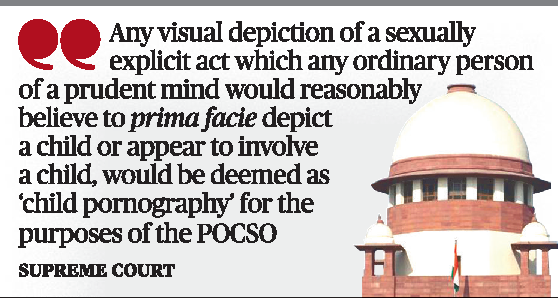
- 24 Sep 2024
Overview of the Ruling
- Date: Recent ruling by the Supreme Court of India.
- Context: Determined that viewing, downloading, storing, or distributing material involving child sexual exploitation constitutes a criminal offense under the POCSO Act and the Information Technology Act.
- Appeal Background: Decision overturned a Madras High Court ruling that deemed private viewing of such material non-criminal.
Terminology and Legislative Recommendations
- Terminology Change: Supreme Court advocates replacing “child pornography” with “Child Sexual Exploitative and Abuse Material” (CSEAM) to avoid trivialization of the crime.
- Amendment Call: Court urged Parliament to amend the POCSO Act and advised promulgating an ordinance for immediate effect.
Key Highlights of the Ruling
- Redefinition of Terminology: Emphasizes that "pornography" may imply consensual acts, misrepresenting the nature of child exploitation.
- Expansion of Section 15 of the POCSO Act:
- Possession Without Reporting: Individuals must delete or report any stored CSEAM; failure results in penalties.
- Intent to Transmit: Possessing CSEAM with intent to share, barring reporting, is punishable.
- Commercial Possession: Storing CSEAM for commercial purposes faces the strictest penalties.
- Concept of Inchoate Offenses: Classifies offenses related to CSEAM as preparatory actions towards further crimes.
- Redefinition of Possession:
- Includes "constructive possession," where individuals can be liable without direct physical possession.
- Watching CSEAM online without downloading can still be deemed possession.
- Educational Reforms:
- Court urged for comprehensive sex education to counter stigma and misconceptions.
- Curriculum should cover consent, healthy relationships, and respect for diversity.
- Awareness of the POCSO Act: Central and state governments are mandated to promote awareness, supported by the National Commission for Protection of Child Rights (NCPCR).
- Formation of Expert Committee: To develop programs for health and sex education while increasing POCSO awareness among children.
- Victim Support and Awareness: Emphasized the need for psychological support, counseling, and educational assistance for victims.
Status of Crimes Against Children
- Increasing Incidents: India leads in online child sexual abuse imagery, with 25,000 uploads reported from April to August 2024.
- Geographical Distribution: Major uploads identified in Delhi, Maharashtra, Gujarat, Uttar Pradesh, and West Bengal.
- Rising Cases: From 331 cases in 2017 to 781 in 2018, with 1,171 cases of inappropriate content dissemination reported in 2022.
Overview of the POCSO Act
- Purpose: Addresses sexual exploitation and abuse of children, defining a child as anyone under 18.
- Features:
- Gender-Neutral: Recognizes that both genders can be victims.
- Victim Confidentiality: Mandates protection of victims’ identities.
- Mandatory Reporting: Requires reporting of suspected abuse.
Gaps in Implementation
- Support Persons: Lack of designated support persons for victims; 96% of cases showed inadequate support during legal processes.
- POCSO Courts: Only 408 designated courts across 28 states as of 2022, leading to access issues.
- Special Prosecutors: Shortage of trained public prosecutors for POCSO cases.
Conclusion
- Call for Collaboration: Emphasizes the need for a coordinated approach involving educators, healthcare providers, and law enforcement to combat child sexual exploitation.
- Societal Responsibility: A shift in societal attitudes is essential for preventing victimization and ensuring recovery for victims.
